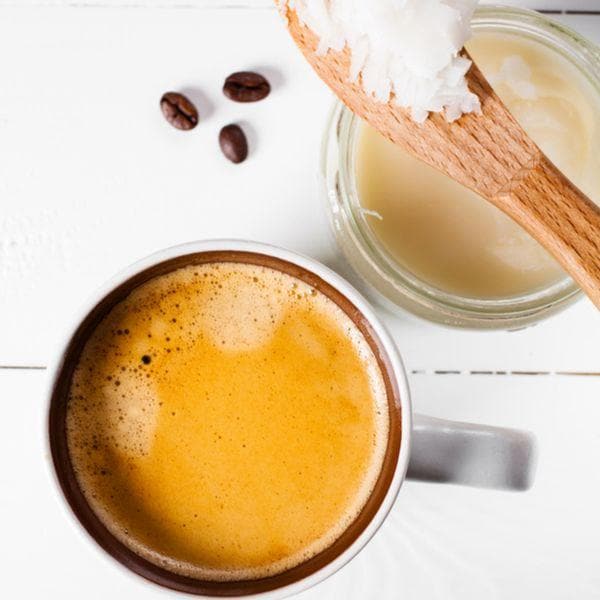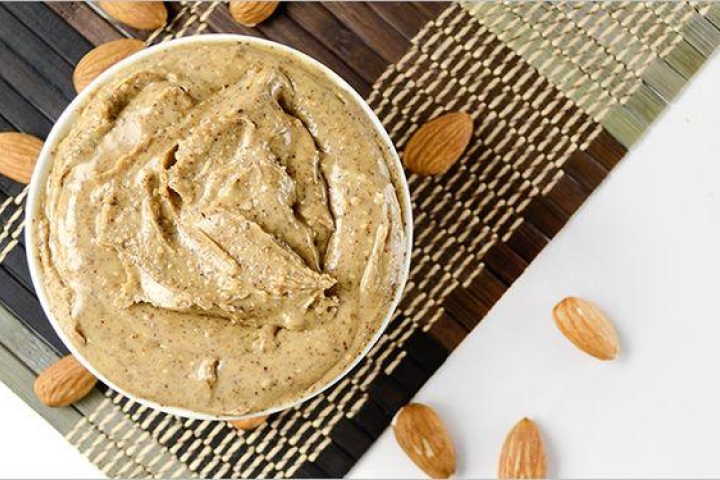What is Keto Coffee, Coconut Oil Coffee and Butter Coffee?
Adding coconut oil to your daily cup of coffee may make you smarter, provide a longer-lasting energy boost, and even help you lose weight. Coconut oil coffee is a modern spinoff of a Tibetan breakfast tradition. Many Tibetan natives add grass-fed yak butter to their coffee or tea in the morning for an extra kick of energy and mental clarity. Health-savvy consumers have taken this a step further by substituting the butter with coconut oil, which is rich in medium-chain triglycerides (MCTs). Here's everything you need to know about the history and benefits of this contemporary morning staple rooted in Tibetan tradition.
The History of Keto Coffee
Butter coffee, coconut coffee, keto coffee, MCT oil coffee, fatty coffee—the practice of adding some type of fat to morning coffee goes by many names. It was popularized by a traveler who discovered the traditional yak-butter blend while hiking through Tibet. Often consumed in place of a morning meal, it provides hikers and mountain-dwellers with a long-lasting, clean-burning source of energy, suppresses hunger, and boosts mental clarity. When news of this concoction reached the United States, it sparked significant interest. Soon after, butter coffee, along with many variations, started appearing in coffee shops nationwide.
Coconut Coffee Benefits
Adding coconut oil to your morning coffee might sound odd, but it's quite delicious. It imparts a light, nutty flavor that isn’t overwhelming, and the texture is smooth. But what are the benefits and how does it work?
Provides Clean, Long-Lasting Energy
If you try keto coffee, you might notice that it evens out the caffeine-fueled energy boost. If caffeine makes you feel jittery, this may help. Instead of a jolt of energy followed by a crash, adding coconut oil to your coffee provides steadier, longer-lasting energy.
Keeps Hunger at Bay
Another benefit of coconut oil coffee is that it keeps you feeling satisfied for longer and provides additional energy due to the unique combination of fatty acids in coconut oil. More than 50% of the fats in coconut oil are MCTs, which are absorbed in the intestine and go straight to the liver to be used for energy or converted to ketone bodies.1 Studies also show that MCT oil may enhance weight loss and help you lose fat.2
Enhances Mental Clarity
Feeling a little foggy-headed? Medium-chain triglycerides in coconut oil enhance your body’s production of ketones, a preferred source of energy for the brain. Ketones may help activate proteins in the brain called brain-derived neurotrophic growth factors (BDNF)3, which protect brain cells and stimulate the growth of new, healthy neurons.4
How to Make Coconut Oil Coffee
To make coconut oil coffee, brew a cup of your favorite coffee and blend in some coconut oil—that’s it! The secret is to blend it well. Use a blender, food processor, or an immersion blender until your coconut oil coffee is frothy like a latte.
We prefer using organic coffee that is sustainably sourced, and high-quality extra virgin organic coconut oil or liquid coconut oil.
- 1 cup of your favorite coffee
- 1 teaspoon to 1 tablespoon extra virgin organic coconut oil (depending on your preference)
Blend well in a blender, food processor, or use an immersion blender until your coconut oil coffee is frothy. You can add flavor extracts or natural sweeteners if you’d like, but that’s totally up to you!
Grass-Fed Butter Coffee
If coconut oil is so beneficial, why do some people still use butter in their coffee? It isn’t just any butter; it’s grass-fed butter. Although butter is primarily milkfat, it is the most complex natural fat, containing about 400 fatty acids and fat-soluble vitamins.5 Contrary to popular belief, numerous studies have reported that consumption of full-fat dairy products may actually support heart health.6 Additionally, grass-fed butter contains more omega-3 fatty acids than butter from grain-fed cows, as well as five times more conjugated linoleic acid (CLA).8,7
Why does this matter? We need omega-3 fatty acids to stay healthy, but our bodies can’t produce them, which means we need to obtain them from food. Omega-3 fatty acids support heart, joint, and brain health, and may boost your mood.9 Although butter is not the richest source of omega-3 fatty acids, it is a source nonetheless. And the benefits of CLA include weight management, immune system health, and maintaining healthy blood pressure levels already within the normal range.
Adding butter to your coffee will provide many of the same effects as coconut oil, including prolonged energy and hunger suppression. You won’t experience the benefits of MCTs with butter, but grass-fed butter offers its own advantages and remains more faithful to the original Tibetan yak-milk recipe. If the thought of adding butter to your coffee seems strange, remember that butter is milkfat, just like creamer. So, it isn’t such a far-fetched idea after all. However, ensure your grass-fed butter is the unsalted variety.
Ghee vs. Butter in Your Coffee
Ghee is a type of clarified butter commonly used in Indian and Southeast Asian cuisines. It's produced by heating butter until it separates—milk solids float to the top, and liquid butterfat (clarified butter) remains at the bottom. When heated further, the milk solids begin to caramelize, and the liquid butterfat loses some moisture. After straining to remove the milk solids, the result is ghee—a nutty-flavored fat with a high smoke point that doesn't require refrigeration.
What are the benefits of ghee compared to butter? They are similar in terms of calories, and many nutrients are the same, but ghee does not contain casein or lactose since the milk solids have been removed.
How to Make Butter Coffee the Right Way
Our favorite way to make butter coffee is to start with freshly ground coffee made in a French press (we love BubbForest® Organic Coffee) then add 1 tsp to 1 tbsp of unsalted, grass-fed butter and blend. Kerrygold butter works great because it’s smooth and full of flavor. Using ghee is also effective and imparts a slightly nutty flavor.
Use a blender instead of trying to mix it by hand for a much smoother cup of coffee, or use an immersion blender in a mason jar. It's crucial to blend it well to achieve a creamy, latte-like texture.
- 1 cup of your favorite coffee
- 1 teaspoon to 1 tablespoon unsalted, grass-fed butter (depending on your preference)
Mix well in a blender, food processor, or use an immersion blender until you achieve a creamy, frothy texture. Add a special touch with a dash of cinnamon on top.
Butter Coffee Variations
Before blending, consider adding cinnamon, nutmeg, a tiny bit of sweetener (such as honey, maple syrup, stevia, or sugar), maca, MCT oil, or anything else you think would taste good! Experiment to find your favorite butter coffee recipe.
Coffee with Butter and Coconut Oil
Some recipes take keto coffee a step further by combining both coconut oil and butter. Instead of just one type of fat, these recipes use equal parts coconut oil and grass-fed butter or ghee. What's the benefit of using both? While coconut oil contains MCTs, it lacks omega-3 fatty acids, and grass-fed butter provides precisely that. Butter does not contain MCTs, but it is rich in omega-3 fatty acids and other beneficial fats. Using them both offers the best of both worlds—efficient brain fuel from MCTs and omega-3 fatty acids. Try it yourself and see which keto coffee you prefer!
Butter and Coconut Oil Coffee
- 1 cup of your favorite coffee
- 1 teaspoon to 1 tablespoon extra virgin organic coconut oil (depending on your preference)
- 1 teaspoon to 1 tablespoon grass-fed, unsalted butter or ghee (depending on your preference)
Place all the ingredients in a blender or food processor and mix well until the mixture is creamy and frothy.
Best Coffee Creamer for Weight Loss
If you're aiming to lose weight, your instinct might be to avoid fat and opt for low-fat products or creamers with artificial flavors or sweeteners to keep your morning beverage interesting. However, some fats are actually beneficial and may even aid in weight loss. It's not the fat that causes weight gain; it's the calories. And while fat does tend to have more calories per serving than other ingredients, starting your day with a bit of fat might make you feel less hungry later. You'll have more energy and will likely snack less.
As long as you maintain a healthy diet, stay active, and monitor your total calorie intake, adding coconut oil or butter to your coffee might be a better choice than using low-fat creamers. If making keto coffee every morning seems too demanding, consider keeping some coconut oil coffee creamer on hand.
Keto Tea with Butter or Coconut Oil
If coffee isn't your preference, that's fine! Another variation of this traditional Tibetan beverage combines butter with tea, which Tibetans claim provides a better mind-body balance than either ingredient alone.10 Traditional butter tea recipes use pu'erh tea, a type of fermented tea, combined with yak butter, barley powder, and milk curds. However, you can enjoy a simpler version by using your favorite breakfast tea in place of coffee in any of the recipes above. You'll still benefit from the prolonged energy boost and satiety provided by healthy fats. Try it with green tea or in a Matcha green tea latte to add a healthy dose of antioxidant catechins to your morning routine.
Keto Coffee Benefits
Start your day with more energy and mental clarity by adding coconut oil or butter to your morning brew, and if you are looking for more ways to get your day off to a great start, read Kick-Start Your Morning: 6 Morning Hacks to Kick-Start Your Day, and keep the momentum going with Move More: How to Move More Each Day.
Do you drink keto coffee? Share your favorite keto coffee recipes in the comments and tell us about the benefits you’ve gained from adding healthy fats to your diet. At BubbForest Health, we carry a wide variety of high-quality food and beverage products to help you pack your pantry and achieve your health and wellness goals.
About Lindsey Toth, MS, RD




Leave a comment